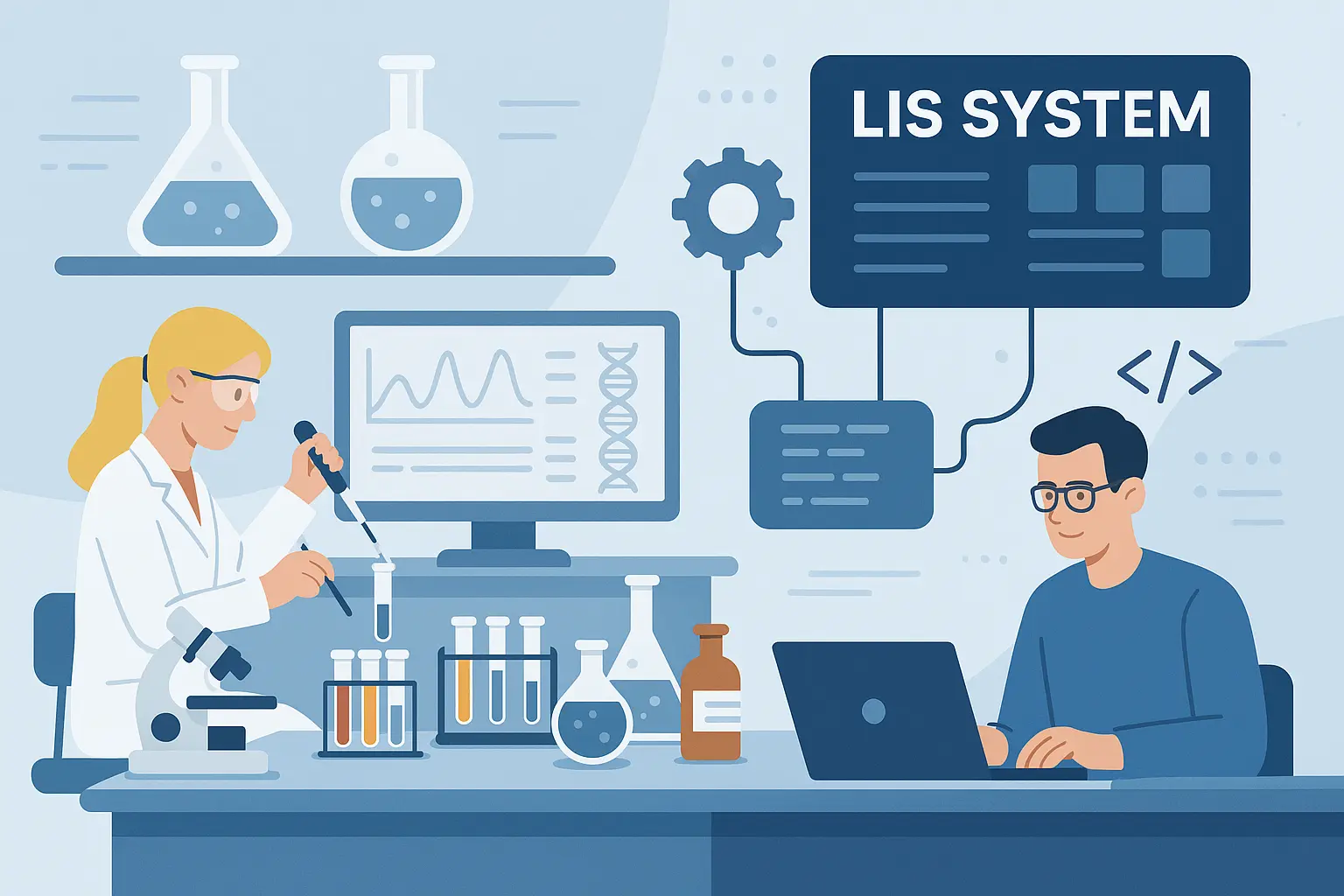Blog
A Comparative Analysis: Laboratory Information Management Systems (Lab LIMS) vs. Laboratory Information Systems (LIS Systems)
June 12, 2024
Lab information management systems (LIMS) and laboratory Information systems (LIS systems) are laboratory software systems that play pivotal roles in organizing laboratory workflow management for testing labs.
While these terms (LIS vs. LIMS) are often used interchangeably they used to possess distinct differences based on their original definitions. In this LIS vs. LIMS comparative article we’ll explore the disparities between lab LIMS and LIS medical systems, their respective functionalities and similarities, the benefits and challenges they present in laboratory settings, and what the future holds concerning laboratory management.

Laboratory Information Management Systems LIMS: Efficient Sample Management and Workflow Automation
Laboratory information management systems (LIMS full form) facilitate the management of samples and their associated data within non-medical laboratory environments in most cases. Lab LIMS are sample-centric laboratory software solutions that automate lab workflow, ensure reliable results, and enable robust sample tracking.
LIMS providers create LIMS lab management software systems commonly utilized in several regulated industries to support workflow management and adherence to regulatory standards. They efficiently manage complex data systems and offer integration with other lab systems for seamless data handling.
Examples of LIMS systems - where they are deployed in industry-specific labs:
- Research and development labs
- Environmental testing labs
- Food and beverage labs
- Manufacturing and industrial labs
A lab information management system can also be occasionally found in clinical and pathology laboratories based in hospitals, medical centers, and independent diagnostic facilities because modern lab LIMS systems, like modern laboratory information systems (LIS systems), incorporate many of the features and functionalities needed in a clinical or pathology laboratory.
Laboratory Information Management System Benefits:
Quality Assurance and Control: A laboratory information management system helps industrial labs maintain quality standards, such as those mandated by Good Manufacturing Practice (GMP), by facilitating batch tracking and ensuring compliance.
Efficient Data Management: A laboratory information management system can handle large volumes of data generated in industrial lab environments, improving lab performance through automation, standardized data outputs, and retrospective analysis.
Resource Management: A laboratory information management system is designed to enable effective tracking of reagents and timely appropriation of resources, contributing to efficient laboratory operations.
The best LIMS excel in the three areas highlighted above.
Laboratory Information Management System Challenges:
Implementation and Maintenance: Installing and maintaining a laboratory information management system can be challenging, especially when dealing with legacy LIMS lab management software (and legacy LIMS providers). Additionally, lab LIMS integration with other laboratory software systems and hardware can be time-consuming.
Workflow Optimization: The appropriate training and expertise are also essential if the laboratory information management system is to be used effectively. The challenge lies in providing comprehensive training that addresses every user role and all levels of technical proficiency to avoid a scenario where personnel unfamiliar with the LIMS lab management software create inefficient lab workflow.
.webp)
Laboratory Information Systems: Managing Patient Information and Clinical Examination Results
A laboratory information system (LIS abbreviation medical) primarily focuses on collecting, processing, storing, and managing patient information and clinical examination results. A laboratory information system (LIS software) is patient-centric and specifically designed for clinical and pathology laboratory settings.
A laboratory information system organizes and synchronizes the patient with his or her medical tests, ensuring accurate and reliable data recording and retrieval in the form of lab reports. An advanced laboratory information system (best LIS) supports lab report customization and delivery options to meet client preferences.
Learn More: LIS System Support for Lab Report Customization and Client Preferences
Examples of laboratory information systems - where they are deployed in medical labs:
- Reference labs (LIS medical)
- Clinical labs (LIS healthcare)
- Molecular labs (LIS molecular)
- Pathology labs (LIS pathology)
Laboratory Information System Benefits:
Data Sharing and Cross-Referencing: A laboratory information system enables secure data sharing with healthcare enterprises and seamless integration with electronic health record (EHR) systems, improving clinical decision-making and patient tracking.
Error Elimination: The best laboratory information system software automates the annotation of data points, reducing the possibility of human errors and ensuring the correct match between test orders and corresponding lab specimens at every stage of lab workflow.
Streamlined Processes: A laboratory information system enhances operational efficiency, accuracy, and scalability, providing visibility into core lab business processes. Additionally, the best LIS laboratory information system vendors can offer their clients all-in-one LIS software with an integrated laboratory revenue cycle management (lab RCM) module that improves overall lab operations and revenue capture.
Laboratory Information System Challenges:
LIS System Integration: Integrating a lab information system with other laboratory software systems, such as EHRs, requires careful planning and coordination to ensure seamless data exchange. The best LIS laboratory information system software has an advantage in this regard, as it comes equipped with an interface engine that maximizes connectivity and reduces the time it takes for an interface to go online.
Implementation Complexity: Like a laboratory information management system, deploying advanced and full-featured LIS software requires comprehensive training and expertise to optimize functionalities and benefits. That’s because the best LIS laboratory information systems can be specifically configured to support every role and every department within the lab organization, including the lab billing department.
Note: Inadequate integration continues to be a major problem for many medical laboratories. In most cases, this is a clear sign that the laboratory has outgrown its laboratory information system.
Learn More: How do I Know if My Laboratory has Outgrown its LIS System?

The Future of LIS Systems and Lab LIMS (LIS vs LIMS) - a Blurred Line
A laboratory information management system (Lab LIMS) and a laboratory Information System (medical LIS) are invaluable tools for lab directors and managers, allowing them to manage and organize data effectively.
In terms of clinical labs and pathology groups and the system they should choose, that question has become less important because of the continued overlap of functionalities supported by both systems.
That said, lab directors and managers should be less concerned about what the system is called and more interested in finding the right laboratory information software solution for them. Software that’s built for them and their evolving requirements and excels in enhancing efficiency, productivity, and overall operational performance.
Learn More: What You Need to Know Before Contracting with a Laboratory Information System (LIS) Company






